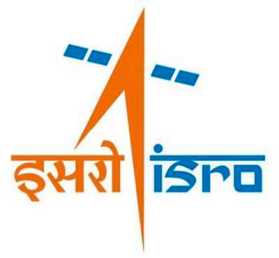
Asteroid 2024 MK, with a diameter of around 200 metres, was at a distance of about three lakh kilometres when closest to the Earth. (Image source: The Virtual Telescope Project website)
NEW DELHI (PTI): Two asteroids, one of them discovered earlier in June, passed by the Earth this week, a rare occurrence with serendipitous timing to commemorate the International Asteroid Day, according to space agencies around the world.
None of the asteroids posed any threat to the planet, they said.
Explaining the footage taken by The Virtual Telescope Project, astrophysicist Gianluca Masi said that asteroid 2024 MK, with a diameter of around 200 metres, was at a distance of about three lakh kilometres when closest to the Earth – 77 per cent of the planet's distance from the Moon.
Masi, founder and director of the crowd-funded service provided by the Bellatrix Astronomical Observatory, Italy, was the commentator of a YouTube feed, streamed live at about 2:30 am June 30, IST. The asteroid was the closest to Earth about 10 hours before the feed went live, according to the commentator.
"It is a huge asteroid coming significantly close (to Earth) this time, but luckily for us, with no risks at all for our planet," Masi could be heard saying.
"But being so close and so large, this object has been very bright at the time of the close approach, so that if you were in the right part of the world, like the South-Western Americas, you could (see) this with a modest binoculars, my friends," Masi continued, deeming the asteroid fly-by as an "exceptional" one.
Further, hurtling at an average speed of nine metres per second, Masi said the celestial object was "peculiar", in that it was moving "pretty fast" against the stars.
The fly-by is perfectly timed to coincide with International Asteroid Day on June 30.
The day, also supported by the United Nations, marks the anniversary of the largest observed asteroid strike in recorded history in 1908, when an airburst above Tunguska in Siberia flattened more than 80 million trees.
Remnants from when the Solar System was formed, asteroids are often called 'minor planets'. There are thought to be about a billion of these irregular-shaped rocky objects orbiting the Sun.
The asteroid 2024 MK, which was discovered on June 16, 2024, highlights the need to continue improving our ability to detect potentially hazardous objects in our cosmic neighbourhood, said the ESA in a statement.
The second asteroid, named (415029) 2011 UL21, is the bigger of the two which approached Earth this week. Measuring 2.3 kilometres across, it is larger than 99 per cent of all known near-Earth objects (NEOs), according to the ESA.
A close approach of an asteroid this size happens on an average every 10 years, according to The Virtual Telescope Project.
At its closest to Earth, the asteroid 2011 UL21 was at about 66 lakh kilometres, 177 times the lunar distance – a "truly safe encounter," according to Masi, the commentator for the YouTube livestream on June 27.
The asteroid is also among the top 10 biggest ones to have come within 75 lakh kilometres of Earth's distance since 1900, Masi said.
There are an estimated 50 lakh NEOs out there larger than 20 metres - the threshold above which an impact could cause damage on the ground, the ESA said.
As part of its planetary defence projects, the ESA is expected to launch the Hera mission in October 2024, the statement said.
Hera is touted to perform a detailed post-impact survey of the asteroid Dimorphos, which was targeted by NASA's planetary defence mission on September 26, 2022.
Named 'Double Asteroid Redirection Test' (DART), the US space agency's mission was the first-ever to demonstrate deflecting an asteroid by striking it in a manner such that it was forced to change its motion in space.
DART had hit the moonlet Dimorphos, just about 160 metres in diameter, orbiting a larger 780-metre asteroid called Didymos, according to NASA's website.
Chrisphin Karthick, a scientist at the Indian Institute of Astrophysics (IIA), Bengaluru, and involved in the DART mission, had told PTI then that it "certainly (was) a step towards" preparing the world for a potential event in the future, such as the one believed to have led to the extinction of dinosaurs, some 66 million years ago.
"We are surrounded by several asteroids and comets that orbit our Sun. Very few of them are potentially hazardous to Earth. Hence, It is better to prepare our defenses to avoid such asteroids on a collision course with Earth in the future," Karthick had said.
 Previous Article
Previous Article Next Article
Next Article













The Indian Air Force, in its flight trials evaluation report submitted before the Defence Ministry l..
view articleAn insight into the Medium Multi-Role Combat Aircraft competition...
view articleSky enthusiasts can now spot the International Space Station (ISS) commanded by Indian-American astr..
view article